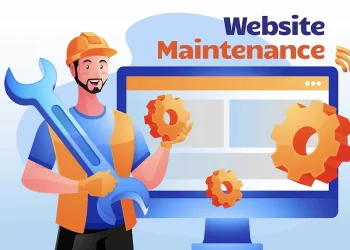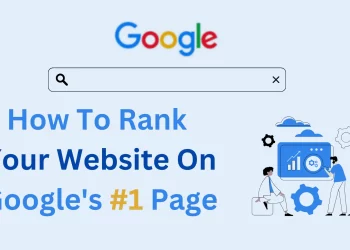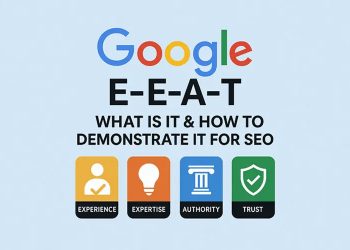What is Core Web Vitals?
Core Web Vitals are a set of performance metrics developed by Google to measure key aspects of a website’s real-world user experience. These metrics focus on how fast a page loads, how quickly it responds to user interactions, and how visually stable it is while loading.
The three main Core Web Vitals are:
1. Largest Contentful Paint (LCP)
Largest Contentful Paint (LCP) is a Core Web Vitals metric that measures loading performance — specifically, how long it takes for the largest visible content element (like a hero image, video, or large block of text) to appear on the screen. A good LCP score is anything under 2.5 seconds, while a score over 4 seconds is considered poor and may negatively impact both user experience and search rankings. To improve LCP, start by using a fast and reliable hosting provider to reduce server response times. Next, compress and properly size large images, which are often the primary culprits of slow load times. Finally, minimize render-blocking resources like heavy CSS and JavaScript, as these can delay how quickly the browser displays meaningful content to users.
2.Interaction to Next Paint (INP)
Interaction to Next Paint (INP) is a Core Web Vitals metric introduced in March 2024, replacing the older First Input Delay (FID). INP measures a website’s responsiveness, specifically how quickly it reacts to user interactions such as clicks, taps, or key presses. A good INP score is under 200 milliseconds, while anything over 500 milliseconds is considered poor and may lead to a sluggish or frustrating user experience. To improve INP, developers should start by breaking up long JavaScript tasks that block the main thread and delay interactivity. It’s also important to defer non-critical scripts so they don’t compete for resources during initial load. Additionally, using web workers to handle background tasks can keep the interface smooth and responsive, ensuring users can interact with the page without noticeable delays.
3.Cumulative Layout Shift (CLS)
It is a Core Web Vitals metric that measures the visual stability of a webpage — specifically, how much the layout shifts unexpectedly while the page is loading. These sudden shifts can be frustrating for users, especially if they’re trying to click a button or read content that moves out of place. A good CLS score is less than 0.1, while a score above 0.25 is considered poor and may hurt user experience as well as SEO performance. To improve CLS, it’s important to set explicit width and height attributes on all images and videos so the browser can allocate the correct space before they load. You should also reserve space for dynamic elements like ads, embeds, or pop-ups to prevent them from pushing other content around. Additionally, loading fonts with font-display: swap can help prevent layout shifts caused by delayed font rendering.
Each metric reflects a different part of the user journey and helps developers identify areas where the site might feel slow, clunky, or frustrating to users. Google uses Core Web Vitals as part of its search ranking algorithm, meaning they directly influence SEO. Optimizing for these metrics not only improves your visibility in search results but also creates a smoother, more enjoyable experience for your visitors.
How Do Core Web Vitals Impact Your Website?
Core Web Vitals matter because they directly impact both user experience and your website’s performance in search rankings. These metrics—LCP (loading), INP (interactivity), and CLS (visual stability)—measure how fast and stable your site feels to real users. If a page loads slowly, reacts sluggishly to input, or shifts content around while loading, visitors are more likely to get frustrated and leave. That means higher bounce rates, lower conversions, and missed opportunities.
From an SEO perspective, Core Web Vitals are part of Google’s Page Experience signal, meaning they influence your site’s position in search results. While content quality and backlinks are still crucial, performance has become a deciding factor—especially when users are choosing between sites with similar content.
In short, optimizing Core Web Vitals helps you:
- Improve user satisfaction
- Increase engagement and retention
- Boost conversion rates
- Gain an edge in search rankings
Important Web Metrics Aside from Core Web Vitals
1. Time to First Byte (TTFB)
- What it measures: The time it takes for the server to respond to a browser request.
- Why it matters: A slow server response time delays everything else, including LCP.
- How to improve: Use fast hosting, enable caching, and optimize server configurations.
2. First Contentful Paint (FCP)
- What it measures: The time when the first piece of content (text, image, etc.) appears on screen.
- Why it matters: Gives a sense of how fast a page begins to load.
- How to improve: Optimize CSS and JavaScript, preload key assets, reduce server delays.
3. First Input Delay (FID) (Replaced by INP in 2024, but still useful for historical analysis)
- What it measured: The delay between a user’s first interaction and when the browser responds.
- Why it matters: Helps identify early interactivity issues, especially on older devices.
- Use case now: Useful for legacy reports or browsers that haven’t adopted INP yet.
4. Total Blocking Time (TBT)
- What it measures: The total amount of time when the main thread was blocked (preventing user interaction).
- Why it matters: TBT correlates strongly with INP and overall responsiveness.
- How to improve: Minimize long JavaScript tasks, reduce third-party scripts, and break up processing.
5. Speed Index
- What it measures: How quickly content is visually displayed during page load.
- Why it matters: Reflects perceived performance—important for user satisfaction.
- How to improve: Optimize rendering paths, use lazy loading, and defer non-critical assets.
6. Document Content Loaded (DCL) and DOM Interactive
- What they measure: When the HTML is fully parsed and when the user can begin interacting with the content.
- Why they matter: Useful for understanding when your site becomes usable.
Tools to Measure Core Web Vitals:
Google PageSpeed Insights: A free tool that provides detailed reports on Core Web Vitals, both in terms of lab data (simulated data) and field data (real user metrics).
Google Search Console: The “Core Web Vitals” report in Google Search Console provides insights into how your site performs based on real user data.
Chrome DevTools: A built-in tool in Google Chrome that helps you record and analyze Core Web Vitals while performing site audits.
Web Vitals Extension: A browser extension by Google that allows you to track Core Web Vitals in real time as you browse your website.
Lighthouse: An open-source, automated tool for improving the quality of web pages that measures Core Web Vitals as part of its performance audit.
Effective Ways to Improve Core Web Vitals
1. Improve Largest Contentful Paint (LCP)
LCP measures the time it takes for the largest visible content (image, text, or video) to load. A slow LCP can cause users to abandon your page before it fully loads.
Tips to Improve LCP:
-
Use a fast, reliable hosting provider: Ensure your server has low response times. Consider using a Content Delivery Network (CDN) to speed up content delivery.
-
Optimize images: Compress large images, use modern formats like WebP, and ensure they’re appropriately sized. Use lazy loading to defer off-screen images until needed.
-
Minimize render-blocking resources: Defer non-critical CSS and JavaScript files, and use asynchronous loading to avoid blocking the initial page render.
-
Enable server-side caching: This reduces the load on the server and speeds up content delivery to returning users.
-
Preload important resources: Use the
link rel="preload"tag to load key resources (like fonts, critical images, or CSS) earlier in the loading process.
2. Optimize Interaction to Next Paint (INP)
INP measures how quickly your site responds to user interactions (like clicks or taps) and how fast the next visual update occurs. Delays in responsiveness can frustrate users.
Tips to Improve INP:
-
Break up long JavaScript tasks: Split lengthy JavaScript functions into smaller, more manageable chunks using
requestIdleCallbackorsetTimeout. This helps prevent the main thread from being blocked. -
Defer non-essential JavaScript: Load non-essential scripts after the page is fully loaded. This includes third-party scripts and analytics.
-
Optimize event handlers: Ensure that JavaScript event listeners are optimized and lightweight. Avoid heavy computations or unnecessary DOM manipulations on interaction events.
-
Use Web Workers: Offload heavy background tasks like data fetching or calculations to Web Workers, which run in a separate thread and don’t block the main thread.
3. Reduce Cumulative Layout Shift (CLS)
CLS measures how much the layout of your page shifts unexpectedly, which can create a frustrating experience for users. A high CLS score means elements are moving around unpredictably.
Tips to Improve CLS:
-
Set size for images and videos: Always define width and height for all media elements like images, videos, and iframes. This ensures that the browser knows the space to allocate even before the media is fully loaded.
-
Reserve space for dynamic content: Allocate space for ads, pop-ups, or dynamically loaded content in advance so they don’t cause unexpected shifts.
-
Avoid font-related shifts: Use the
font-display: swapCSS property to prevent text from being invisible or shifting as custom fonts load. -
Avoid inserting content above existing content: When adding new elements (like pop-ups or banners), do it below the fold or in a way that doesn’t push existing content around.
4. General Optimization Tips for All Core Web Vitals:
-
Minimize HTTP requests: Reducing the number of requests (e.g., by combining CSS and JavaScript files) can speed up page load times.
-
Use efficient CSS and JavaScript: Write lean code and avoid unused styles or scripts. Tools like PurgeCSS can help eliminate unused CSS.
-
Enable HTTP/2 or HTTP/3: These protocols improve loading times by allowing multiple requests to be sent at once over a single connection.
-
Leverage browser caching: Set up long expiration times for static assets to ensure they are cached in users’ browsers, reducing load time for repeat visits.
-
Monitor with Real User Monitoring (RUM): Use tools like Google Analytics, Lighthouse, and Web Vitals Extension to get real user data, helping you understand performance from actual visitors








